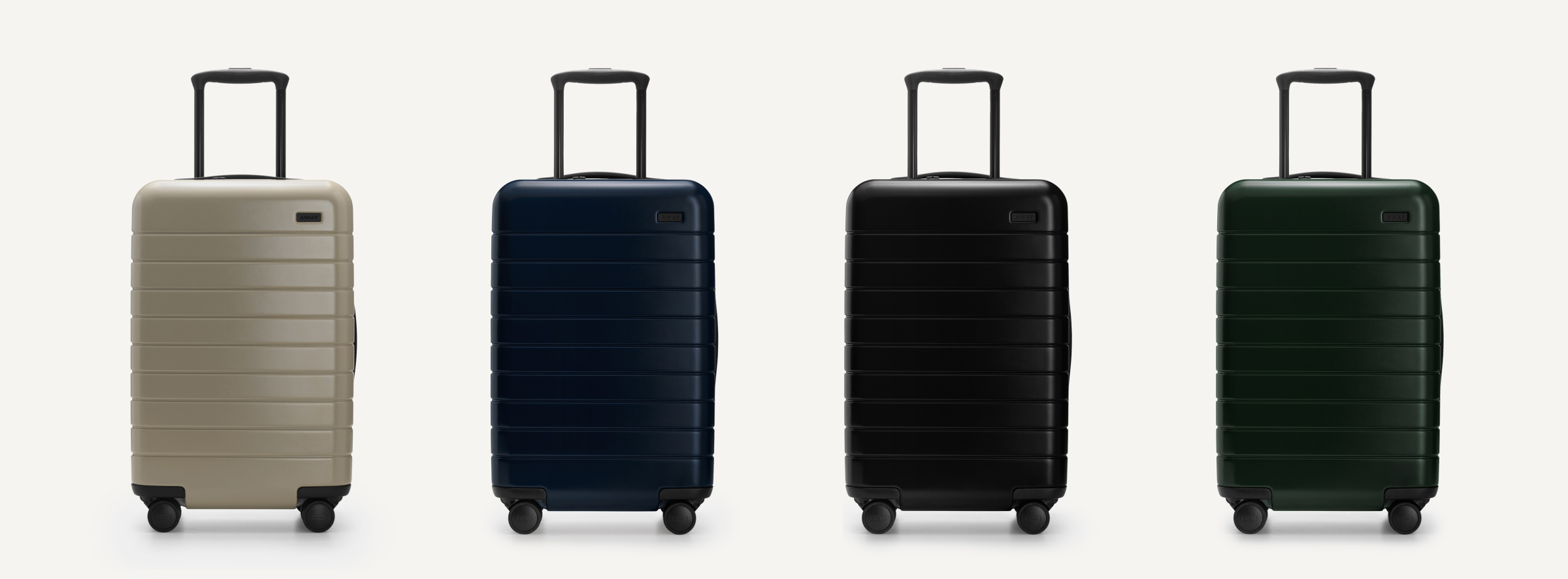
In The Boss, women share how they became successful and the lessons they learned along the way.
When we launched Away, it was because of a personal pain point: Jen’s luggage broke. When she looked for a replacement, she realized there wasn’t a luggage brand that was iconic but accessible, and that made a high-quality product that didn’t cost more than the trip you were planning to take it on.
That’s why in 2015 we set out to create a company that would offer the luggage that Jen was looking for and to create a brand that people could get excited about. We appropriately named it Away, and we create products and experiences that make travel more seamless.
We started on the same day at Warby Parker. We were working on such different parts of the business, so we were able to learn a lot from each other and form a great friendship along the way. Steph was the Head of Supply Chain, building the team handling product development, manufacturing and fulfillment, and I was leading the brand’s early content and partnership efforts. As business partners, we bring very different strengths to the table, and it’s a big part of the reason we knew we’d work well together.
We had a deep understanding of two things that we knew would set Away apart: the first being how a direct-to-consumer model could disrupt an entire industry (and benefit the customer), and the second being how a good brand could make people care about a product that they might not have otherwise thought much about.

A little more than two years after deciding to launch our company, it’s clear we’ve done a few things right as we have hundreds of thousands of happy customers, a team of more than 100 and tens of millions in revenue. But it hasn’t always been easy, and we’ve made a few mistakes along the way that were inevitable when you’re moving quickly. Still, we thrive on a culture of embracing risk and learning from our mistakes.
Here are a few other things we’ve learned so far:
1.) When you’re fundraising, take the emotion out of it.
In the beginning, we raised funds from friends and family— but because the company’s success depended on our ability to design and manufacture a physical product, we knew we’d need additional capital to meet demand, and to scale in a meaningful way. Fundraising can be a draining process for anyone, and as women, the numbers weren’t on our side. In 2017, women received just 2.2% of venture capital funding.
While fundraising is admittedly emotional — you’re pitching your blood, sweat and tears and looking for validation of your idea — we quickly learned to take the emotion out of the process. From day one, Steph helped me see that we weren’t asking for a favor, we were giving people an incredible opportunity to invest in something that we would work tirelessly to make successful. That distinction was crucial to taking the emotion out of the ask. It made us grateful for quick nos, which allowed us to move on with other options.
This doesn’t mean you take the humanity out of these interactions, it just means that you don’t take rejection personally.
2.) Surround yourself with people who understand your vision.
Whether it’s finding a business partner who can complement your skills or hiring people who are the best in their respective fields, the team you build — and how much they believe in the long-term objective — is crucial to whether or not you’ll be successful. Steph and I bring different strengths to the table, but we also share common goals and a vision — like our obsession with making decisions based on our customers, which is our guiding light. We��ve worked to build a team of people with diverse background and perspectives, which allows everyone in the company to catch each other’s blind spots when it matters, and offer a fresh perspective on projects and obstacles.
3.) But understand that not everyone will understand your vision — and that’s OK!
However, when you’re building something, you’ll inevitably encounter people who doubt your vision or even you personally. In some early conversations, people told us that no one would ever get excited about luggage. We took that sentiment as the reasoning for our company: There was an obvious gap in the travel space and we were going to take advantage of it.
You can’t fault others for thinking differently, but you can try to understand where they’re coming from and use that feedback to improve your business idea. Today, we’re grateful that we didn’t spend too much time dwelling on those who said no.
The people who have truly added value to our vision didn’t need much convincing.
More Must-Reads from TIME
- Why Trump’s Message Worked on Latino Men
- What Trump’s Win Could Mean for Housing
- The 100 Must-Read Books of 2024
- Sleep Doctors Share the 1 Tip That’s Changed Their Lives
- Column: Let’s Bring Back Romance
- What It’s Like to Have Long COVID As a Kid
- FX’s Say Nothing Is the Must-Watch Political Thriller of 2024
- Merle Bombardieri Is Helping People Make the Baby Decision
Contact us at letters@time.com